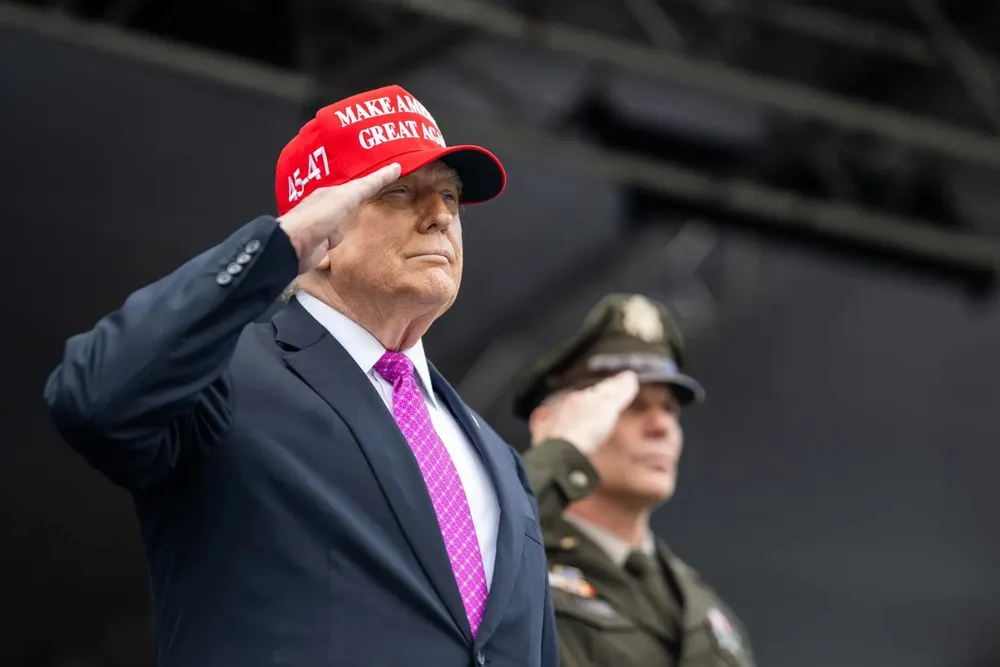Executives warn Trump policies threaten US battery storage boom
Gigascale deployment pipeline and new manufacturing sites are vulnerable to cost hikes and declining investor confidence

The US battery energy storage system (BESS) boom is vulnerable to Congressional Republicans’ move to clamp-down on federal tax credits, as well as President Donald Trump’s uncertain tariff policies, industry executives told a recent conference.
Deployment and supply chain investment has been spurred by tax credits included in the Inflation Reduction Act (IRA), the landmark 2022 climate law that President Donald Trump has targeted for repeal or drastic amendment.
“Tax credits are incredibly meaningful with respect to accelerating what we're doing with our supply chain here in the US,” said Suzanna Leta, vice president of policy and advocacy in the Americas at battery storage manufacturer Fluence.
The company, a joint venture of Siemens Energy and AES, began reshoring its manufacturing in the US in response to supply chain disruptions caused by the global pandemic of 2020-21.
This pace ramped over the past two years on the strength of IRA incentives. Fluence now produces cells, modules, enclosures, and thermal and battery management systems at plants in Texas, Tennessee, and Utah representing some $700m investment.
The pipeline of new projects rose 49% compared to last year to reach 45GW, while manufacturing capacity is set to surge 55GWh in modules and 90GWh in cells in the coming years, according to ACP.
Battery capacity is measured both in terms of instantaneous load (MW/GW) and duration (MWh/GWh).
Tax credits at risk
The IRA incentives for developers include investment tax credits (ITC) in sections 45Y and 48E of the US tax code that offer up to 30% off Capex for project developers, assuming prevailing wage and apprenticeship requirements are met.
For manufacturers, the Advanced Manufacturing Production Credit, known as 45X, provides per-unit credit of $35/kWh for battery cells and $10/kWh for modules.
Section 48C, meanwhile, offers up to 30% tax credit for manufacturers building new or upgraded facilities to produce batteries, critical minerals or grid components.
Even with tax credits for manufacturers, costs are still somewhat higher in the US. To overcome this price gap, the IRA provides an additional 10% ‘domestic content’ tax credit to developers to use Made-in-America components.
The domestic content adder “makes sure we can sell our US manufactured product to the project owner,” Fluence’s Leta said during ACP’s recent Cleanpower 2025 conference.
“It's the thing that gets them to make to buy what we're making here,” she added.
First, it would require projects to begin construction within 60 days of Trump signing it into law, and they must be placed in service by the end of 2028. Under the present tax regime, projects can qualify for tax credits at start of construction, a far easier hurdle to meet.
The House bill also toughens already complicated FEOC – foreign entity of concern – rules for projects seeking to claim tech neutral tax credits.
New FEOC would deny the credits to projects and taxpayers that employ critical minerals and/or equipment from, or have links to, companies in Iran, North Korea, Russia, and especially China.
China dominates global battery supply chains at nearly all levels, holding nearly 85% of global battery cell production capacity and substantial shares in cathode and anode active material production, according to the International Energy Agency. This makes it nearly impossible to produce batteries without some exposure to Chinese-sourced components or materials.
The House bill is now under consideration by the Senate. Republicans there have signalled they would likely introduce their own version.
Tariff risk
While US battery manufacturing has ramped in recent years, the industry is still highly dependent on foreign sourcing, setting a record $18bn for energy storage imports last year, although “the trajectory of growth has slowed”, according to ACP.
The advocacy group “expects energy storage lithium-ion battery imports to decrease as additional module and cell manufacturing capacity commissions,” it said in its 2024 market report.
Import reliance exposes the sector to tariff risk, with Trump putting 30% temporary levies on Chinese imports, which could shoot up depending on progress made between US and Chinese trade negotiators.
The elevated tariffs could lead to higher costs for BESS projects that could chill deployment while the US advances its manufacturing sector or shifts procurement outside China.
“If you have a 45% increase in tariffs for batteries, we'd expect an 81% increase in Capex for a four-hour duration battery, and that really heavily influences then what we expect in terms of deployments,” said Helen Kuo, head of US power at BloombergNEF, speaking during another panel.
More critically, the on-again, off-again tariff negotiations and Congressional budget efforts are heightening uncertainty in the sector.